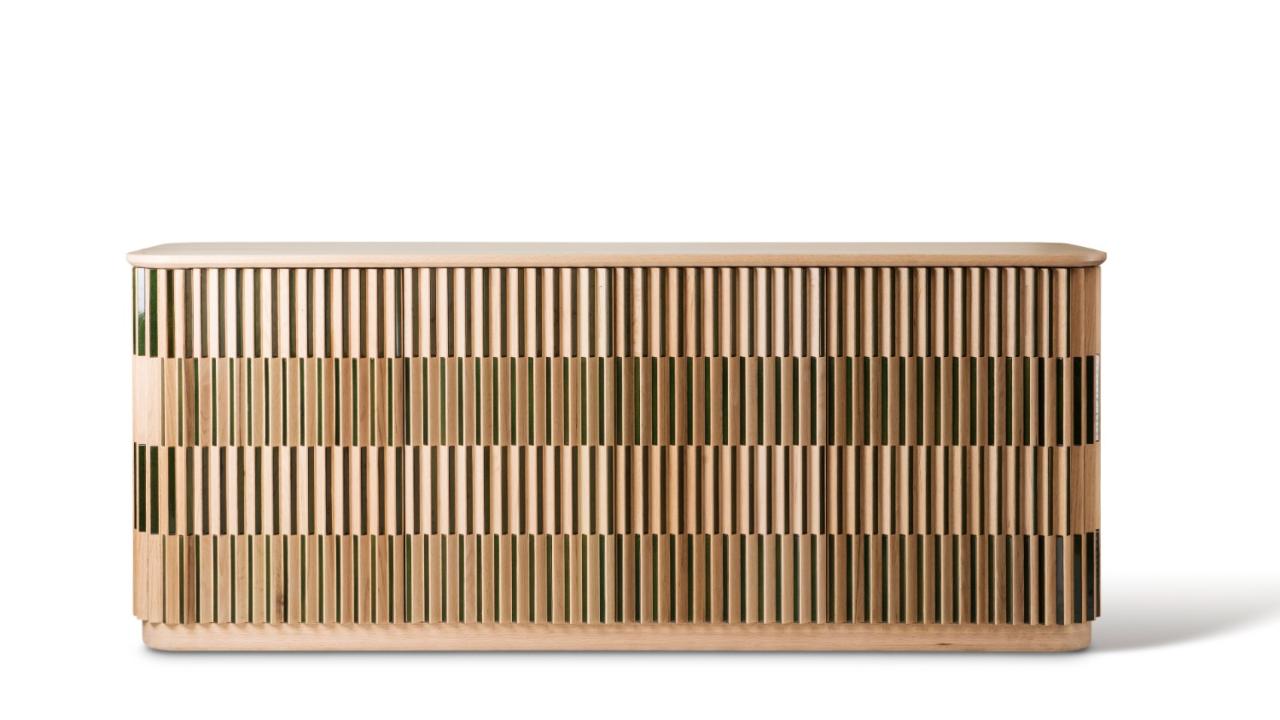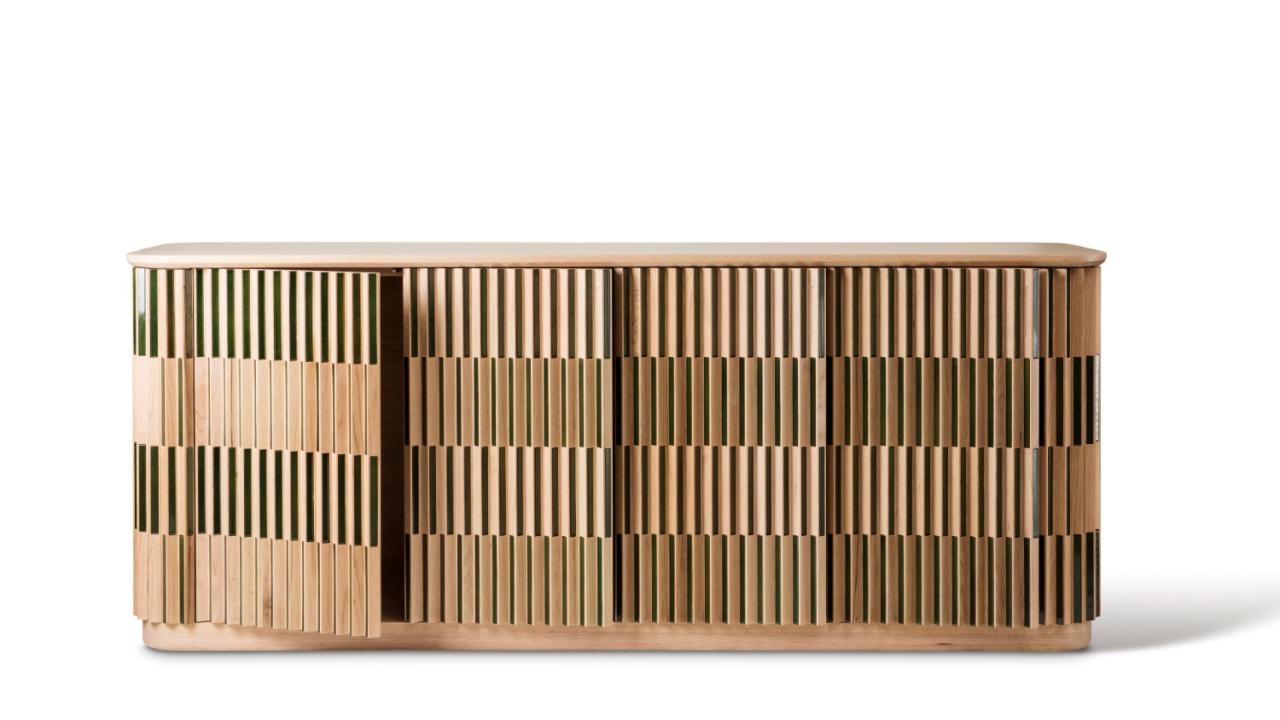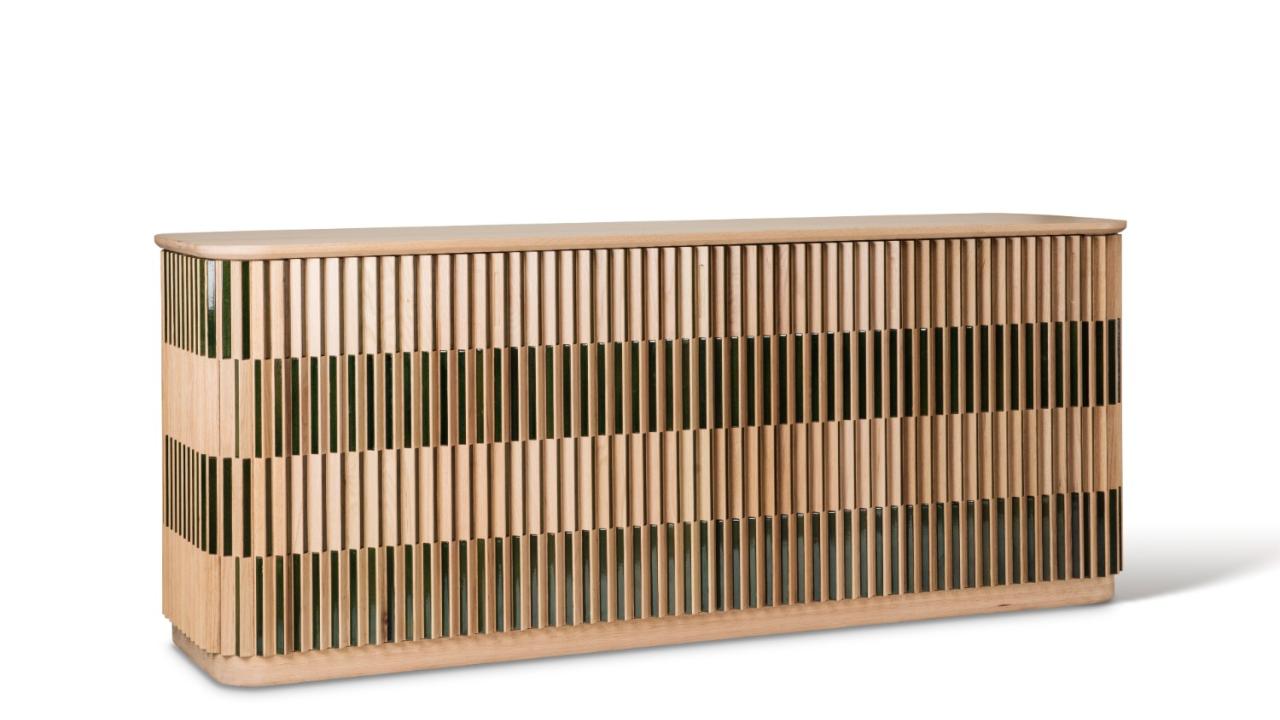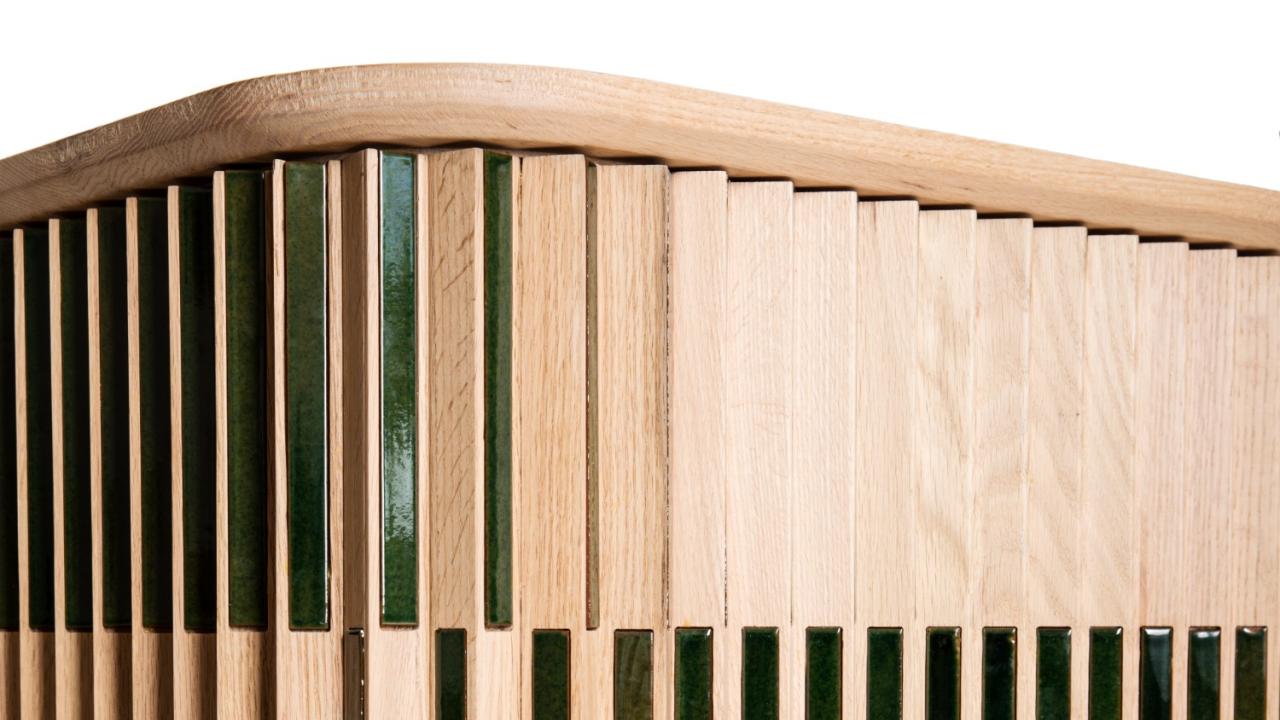Nikhil and Nindya Bucktowar Kalki
The Boomslang
By Kalki Ceramics: Nindya Bucktowar and Nikhil Tricam
American red oak; hand-fired ceramic tiles; water-based sealer
Kwazulu-Natal based architects and ceramicists Nindya Bucktowar and Nikhil Tricam of Kalki Ceramics take their inspiration for their piece, named The Boomslang, from the rhythm and colour of the scales of the South African tree snake, known locally as the Boomslang. The layers of the piece, with their timber and handmade ceramic ‘scales’, take their form from the coil of the Boomslang around a branch — an animal the duo celebrate as an, “embodiment of existing in a visual harmony with one’s surroundings, while remaining simultaneously camouflaged — a tribute to a striking, exceptional creature, that made it a natural fit for the piece,” they say.
“For us, an heirloom is something that operates in our three dimensions, existing as an item of desirability and beauty, while also managing to operate in the fourth, temporal dimension. It will bridge time, by accumulating and retaining significance through each successive generation of ownership. In this, while the aesthetics are timeless, the value truly comes from the passing of time. We feel that by using a truly sustainable material we are able to communicate that further value is added to an heirloom when its creation is in harmony with the planet, and not exploitative of it. With care and craft, value is created. And with the right materials and principles, that value is cemented.”
Another incredibly important facet to working with American red oak for Future Heirlooms, is that the lumber for the project arrived at the South African port of Durban carbon negative. This means that there was more CO2equivalent sequestered inside the delivered lumber than was emitted during all the processes of extraction from the forest, sawmilling, kiln-drying and even shipping. Just about 1.3 cubic metres of American red oak were used to make all seven pieces, with the finished pieces being made up just under 1 cubic metre of wood after manufacturing. For their lifetime, these seven furniture pieces will keep around 1,069 kg of CO2equivalent out of the atmosphere.
Such is the size of the US hardwood forest resource and so dominant in the forest is red oak at roughly 18% of the total resource, that all the red oak lumber used to make the seven designs would have been replaced in the US hardwood forest through natural regeneration in just 1.35 seconds.
For more about Future Heirlooms make sure to follow the design journey as it unfolds on the AHEC and Always Welcome websites and social media platforms over the coming months, and make sure to keep an eye out for further announcements as this exciting initiative evolves into its next phase.




